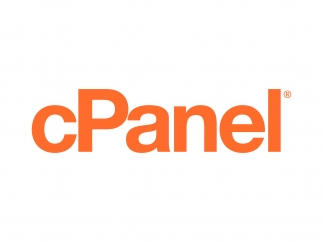What Is cPanel? A Comprehensive Beginner’s Guide
I’m sure you are like me. When buying something as important as a web host, open dozens of different sites in your browser and review and compare each brand’s or package’s features. One of the things that may have caught your eye in these reviews is the cPanel.
In today’s article, we want to acquaint you fully with the cPanel, explain its advantages and disadvantages, and review its differences from other user panels. For now, let’s start with a simple definition.
What is the cPanel control panel?
cPanel is the name of a very popular control panel for hosts. Installing this control panel on your hosts allows you to manage all its different parts easily.
Wait a moment here
When we wanted to write this article, we realized that for many, the question is:
What is cPanel Hosting?
Simply put, there is no such thing as a cPanel host! cPanel is a control panel, and when it is installed on your hosting space (host), you have a host equipped with cPanel. So, if you see cPanel hosting somewhere, know that their user panel is cPanel.
If you agree, let’s examine the uses of this control panel and the reasons for its popularity.
What can we do with cPanel?
As I mentioned before, with cPanel, you can easily manage your web hosting space, but let’s get a little more specific and get acquainted with some convenient cases:
- Add different domains to hosts
- Set up site emails
- Simple installation of the content management system (for example, WordPress) on hosts
- Backing up the website
- Easily upload files to the server
- Check the bandwidth used
- Apply various security settings
- Install peripherals on the server
- Install a new database
- Database management
- DNS management
- And other applications!
cPanel possibilities certainly do not end here. Once you start working with cPanel, you can learn and use any of them as you see fit.
Now, considering that you have other options besides the cPanel control panel, such as the DirectAdmin and Plesk control panels, it is necessary to get acquainted with their strengths and weaknesses so that you can make the right choice.
What are the advantages and disadvantages of cPanel?
First, I make an important point: Control Panel cPanel can only be implemented on Linux hosts. So, if you want to use Windows hosting, you must draw a line around it. If you pay attention to the plans provided by hosting companies, only Linux hosts are equipped with it.
Advantages of cPanel
- Easy to use
- Good user interface
- Easy to learn
- It has many educational resources
- Has strong support
- Ability to install software automatically
- Compatibility with all web browsers
- IPv6 support
Disadvantages of cPanel
- Too many features can confuse you
- Risk of losing important settings (by applying new settings)
- Security vulnerabilities in the cPanel were cracked
What are the alternatives to cPanel?
There are more than 100 different control panels for host management. Some web hosting companies have even designed a dedicated control panel for their users. DirectAdmin and Plesk are two very good and popular control panels that you can use instead of cPanel.
Each control panel has specific features you should be familiar with to choose the one that suits your needs.
A brief introduction to Direct Admin
DirectAdmin and cPanel are very similar, and both run on Linux hosts. However, their differences should not be too important.
Remember, we said that many cPanel options can confuse you? You no longer have this problem with Direct Admin; the facilities provided upon arrival are sufficient and prompt. But …
If you want to develop your Direct Admin and add other features, you will need to purchase peripherals. This is if most of the free cPanel features are available to you.
Aside from that, DirectAdmin’s most important advantage is its higher security than cPanel. So, if you care about security, consider Direct Admin.
A brief introduction to Plesk
Unlike the previous two cases (i.e., cPanel and DirectAdmin), the Plesk control panel can be run on both Linux and Windows hosts. If you use Windows hosting, Plesk is usually the only choice.
The Plesk user interface is designed to be very simple and user-friendly, and you can easily manage server resources.
A standard Plesk license is slightly cheaper than a cPanel license. Still, you should note that a standard or basic license has fewer features than a Plesk Full Server license (for example, the number of accounts you can enter is limited). So, when buying well, ensure the standard license features are appropriate for your work. If not, you must pay more for advanced licenses and add peripherals to the panel.
A quick review
According to what we said, if you are using a Linux host, it is better to choose one of the two control panels, cPanel or DirectAdmin. Because of Plesk’s costs, this choice makes more sense.
However, if you use Windows hosting, Plesk will be the best control panel for your site.
FAQ
What is cPanel and what does it do?
cPanel is a Linux‑based web hosting control panel that provides a graphical interface and automation tools for managing a website and server without needing command‑line skills.
What key features does cPanel offer?
Features include file and domain management, email account creation, database administration, one‑click application installations, SSL and security setup—all accessible via an intuitive dashboard.
Who should use cPanel hosting and when?
cPanel is ideal for beginners, small business owners, and anyone who wants to manage their website easily. It’s especially suited for shared hosting, VPS, or dedicated servers where ease of use is important.
